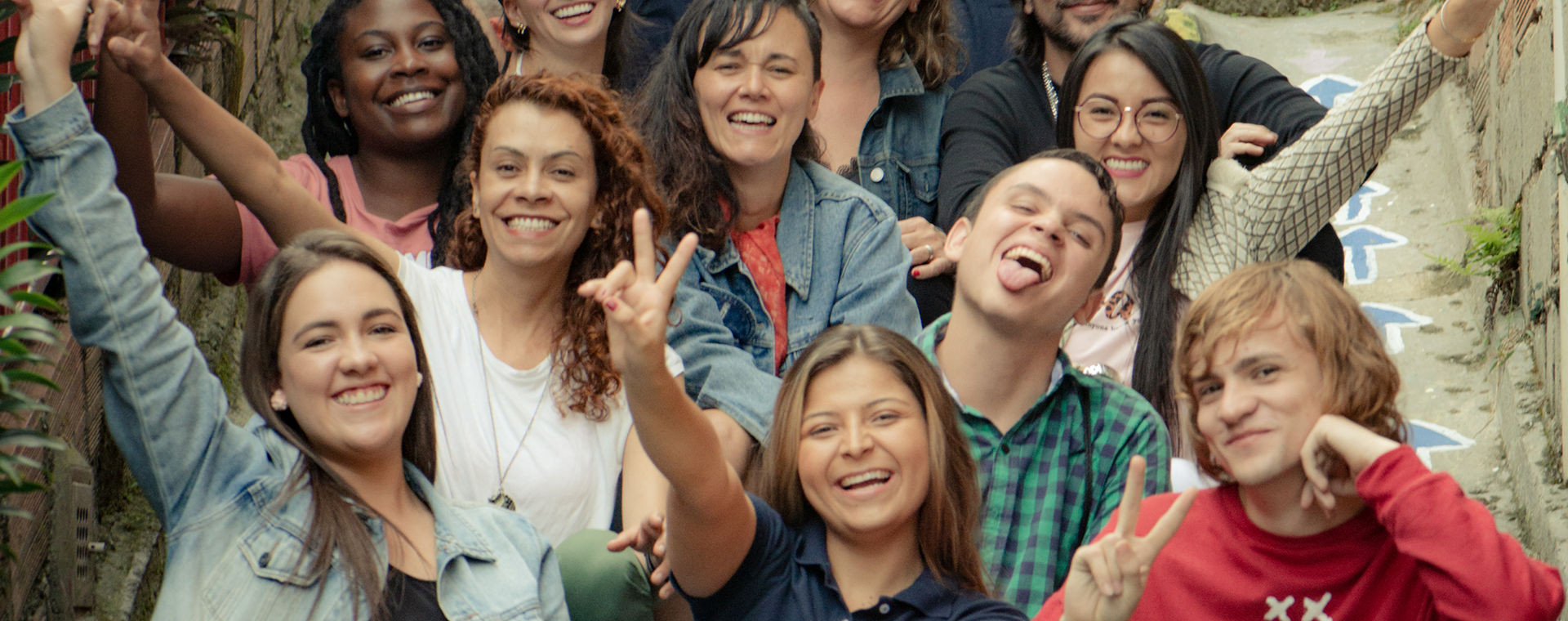
Step 2: Community transformation
In 2010 during one of the most violent periods in Medellín’s history, we were invited to hold a symbolic event at Comuna 13, one of the areas of the city that concentrated a high number of murders. The aim was to persuade the perpetrators of the violence that life can be a whole different story without weapons.
We were invited by Son Batá and Casa Kolacho to hold a concert on the El Salado court. These two cultural initiatives were birthed from hip-hop and make an appeal to live life in a different way. Despite the fear of taking to the streets, more than 4,000 people came to celebrate the International Day of Peace on September 21. This event brought together the “good and bad”, blurred borders, combos and threats, and all the neighborhoods who dressed in white and waved flags.
Skills for life, leadership, and social entrepreneurship
This experience opened our eyes to the power of youth to resist violence. Through music and various artistic expressions, the youth leaders of Comuna 13 requested children from the war, becoming new heroes in their neighborhood. We were motivated to embark on a journey in search of experiences and learning routes that awaken young people to their power to bring about change.
Validated methodologies
Our methodology, PAZalobien, Líderes de Cambio is a social-change learning path that seeks to strengthen life skills, leadership, and social entrepreneurship in young people between 14 and 28 years old. The methodology gives young people the opportunity to stimulate their potential as agents of change through playful processes where they discover their own power as peacebuilders, understand the context of their realities, and design and implement innovative solutions to the problems in their communities. These change initiatives, developed in groups of 10 to 15 young people, seek to contribute towards the construction of a culture of peace, the protection of the environment, the reduction of domestic violence, and strengthening gender equality, or any other subject that young people want to influence.
Stimulating environments for social leadership
In addition to the training process, it is important that young people experience stimulating environments in which to exercise their leadership. Having the basic financial resources that allow them to carry out their projects is important to move from theory to action. It is also necessary to transform the vision of many adults and institutions that view young people as victims or perpetrators only, or as passive agents, and to elicit technical, financial, and mentoring support from these actors.
For example, Candelo went from being a member of a gang to a community leader and an example of transformation. Juan Esteban, as his birth record says, is a young man from Comuna 8 of Medellín who lost his father at the hands of the armed conflict and who decided to avenge his death by joining the same war. However, when he faced his first “assassination commission” he could not do it, as he remembered the words of an empowering hip hop song on that day. Today Candelo is a Global Shaper in Medellín, active in the Young Peace Builders Network, a rapper, and the director of his own hip-hop school for boys and girls.
The content of this article was translated and adapted from “Reimaginando a Colombia: Visiones del País que Podemos Construir“, published in 2019 by Editorial Planeta y and edited by McKinsey & Company.


